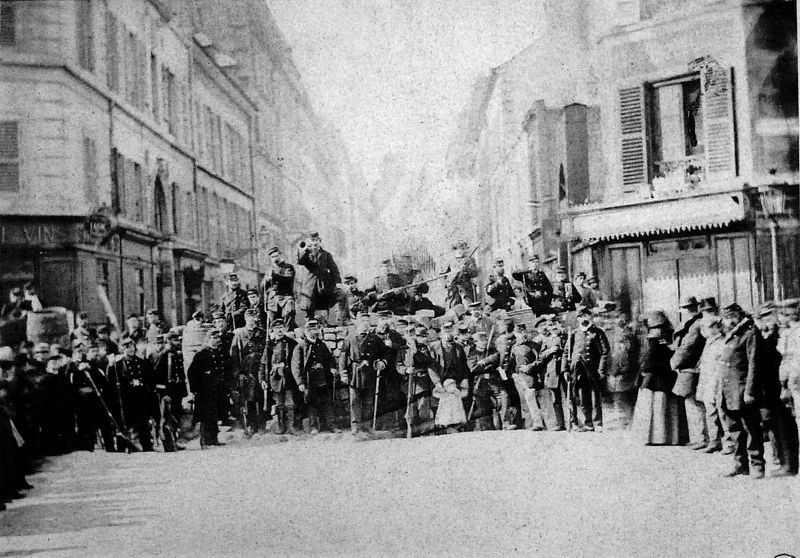Introduction

Locomotive à vapeur (steam locomotive) : 1860 -1865 Ph. G. Sirot / Coll. Archives Larousse
Retrieved from https://www.pinterest.fr/pin/84935142950309308/
Industrialization in France has proceeded more slowly than industrialization in England. France has nevertheless benefited from the same technical innovations, but the pace of implementation of agricultural and industrial mechanization has been slower. Moreover, the impacts of the industrial revolution were the same as in England: urbanization, poor living conditions for workers, new social classes, etc.
It was the textile and metallurgy sectors that were first affected by industrialization in France. From the middle of the 18th century, the textile sector was in full proto industrialization: several workshops and factories brought together artisans. Proto industrialization was accentuated by the importation of English techniques and the arrival of several British families. France already possessed the same technical means as England but experienced less rapid development.
It was in 1850, with the arrival of the railroad, that the situation changed: the iron and steel industry experienced great developments. The railroad networks needed steel (used as early as 1866 to make rails), coal, iron, and steam engines.
Thanks to the development of the railroad, France was able to develop its economy, despite the backlog of England, Germany, and the United States. The French bourgeoisie preferred abstract tasks, legal functions, and land ownership to industrial property. Their interests were also aimed at the railroad. Therefore, the network has grown rapidly, centred in Paris.
Like everywhere else, industrialization in France is creating social debates. The working and living conditions of the workers are miserable: meagre and insufficient wages, hard work for the children, unsanitary city and housing, etc. Industrialization is then marked by class struggle and labour rights. Since the French Revolution, individual freedom has taken precedence. The freedom of industrialists thus violated the rights of workers, who were then without protection from their bosses.
Task

Commune de Paris barricade rue Saint-Sébastien (Paris commune barricade Saint-Sébastien street)
https://commons.wikimedia.org/wiki/File:Commune_de_Paris_barricade_rue_Saint-S%c3%a9bastien.jpg
In this task, what is asked is to work with other learners. Make some exploration, be curious and provide yourself some documents about the living conditions in your region during the industrialization period. You will have to tell their stories by creating a virtual heritage trail. The objective is to gather some local archives, go to the museums or use the internet in order to get information on the living conditions of the industrial workers. It is also possible to conduct interviews with people you know or get some testimonies. Then, you will use all the gathered information to create virtual stations for visitors to explore.
However, be careful: don’t do plagiarism and always cite your sources.
Process
This task requires many steps, that’s why it is recommended to gather a group of 3 or 4 people. Determine who is going to be responsible for each part. You should start by looking at the given examples and then search the internet about “Industrialization living conditions” and your region. You can then visit archives, museums and libraries to find out more. Come up with a story you want to tell. If you can - ask workers you know about their experiences - you could ask them about places where they lived, where they worked and how they spent their leisure time and what they meant to them. Ask them for photographs, record interviews - give them a voice. Create a storyboard for all the stations you want to create, detailing which resources you are going to use for each and what story you want to tell at each station. Learn how to use a 360 camera and find a suitable platform for your tour. Create the stations with your collected material - use collected photos, interviews, sounds and add your own narration.
Conclusion
Understanding a local community, it is story and its living conditions are precious knowledge. Being able to gather information on it and to bring it together in a coherent narrative, told on a virtual platform helps to preserve its memory. You are now able to weave together the old and the new, bringing history to live.
Evaluation
- Collect relevant information
- Learn how to create a virtual tour
- Get to know the living condition of a region
- • You will have learned about the history of French workers in Paris during the industrialization, their living and working conditions.
- • You will get to know some of Paris history and how the situation changed depending on your social and economic status in society.
- • You will be able to do research in libraries, museums, archives and the internet.
- • You will be able write a storyboard.
- • You will be able to convert your knowledge and your collected material into a virtual tour.
- • You will be able to do research about your local community.
- • You will be able to create a compelling story told in a virtual environment.













